Guohua Shen
Shrinking the Semantic Gap: Spatial Pooling of Local Moment Invariants for Copy-Move Forgery Detection
Jul 19, 2022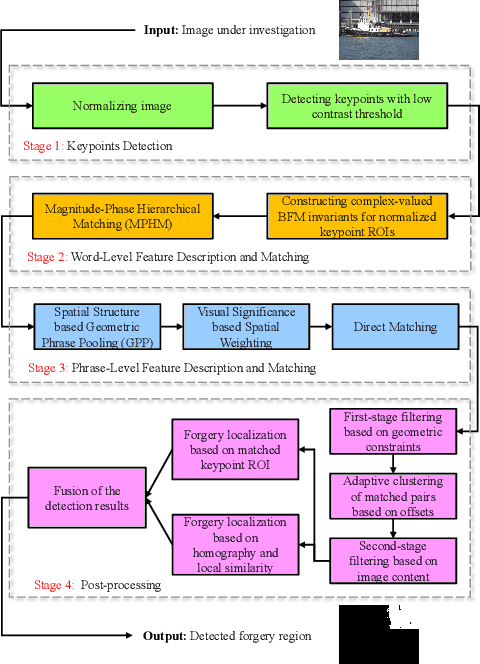
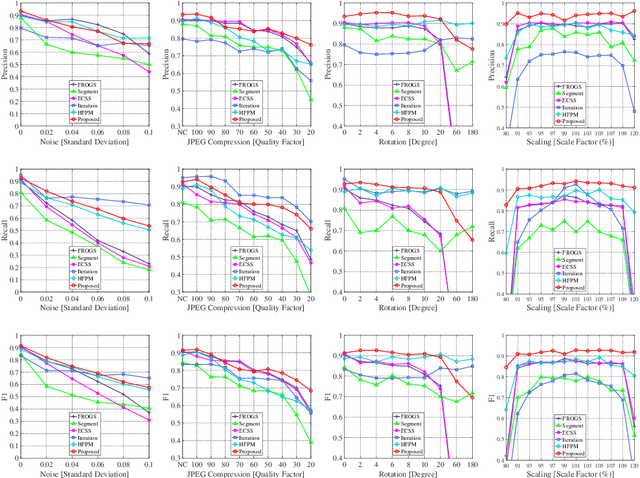
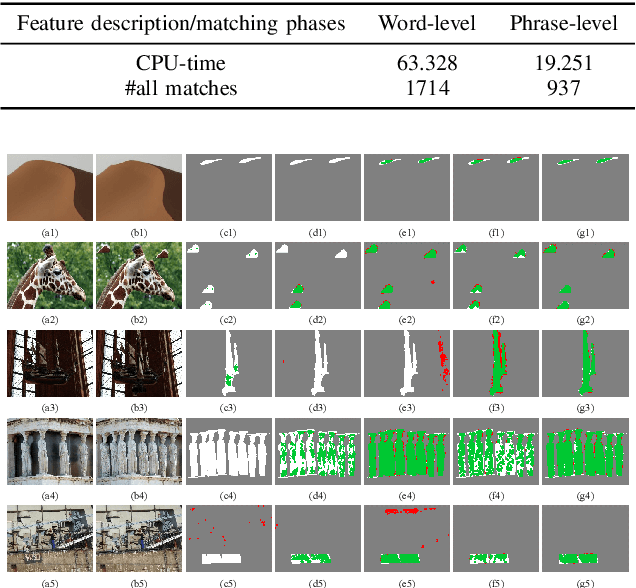
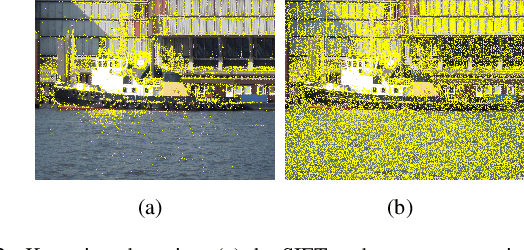
Abstract:Copy-move forgery is a manipulation of copying and pasting specific patches from and to an image, with potentially illegal or unethical uses. Recent advances in the forensic methods for copy-move forgery have shown increasing success in detection accuracy and robustness. However, for images with high self-similarity or strong signal corruption, the existing algorithms often exhibit inefficient processes and unreliable results. This is mainly due to the inherent semantic gap between low-level visual representation and high-level semantic concept. In this paper, we present a very first study of trying to mitigate the semantic gap problem in copy-move forgery detection, with spatial pooling of local moment invariants for midlevel image representation. Our detection method expands the traditional works on two aspects: 1) we introduce the bag-of-visual-words model into this field for the first time, may meaning a new perspective of forensic study; 2) we propose a word-to-phrase feature description and matching pipeline, covering the spatial structure and visual saliency information of digital images. Extensive experimental results show the superior performance of our framework over state-of-the-art algorithms in overcoming the related problems caused by the semantic gap.
SOM-based DDoS Defense Mechanism using SDN for the Internet of Things
Mar 18, 2020
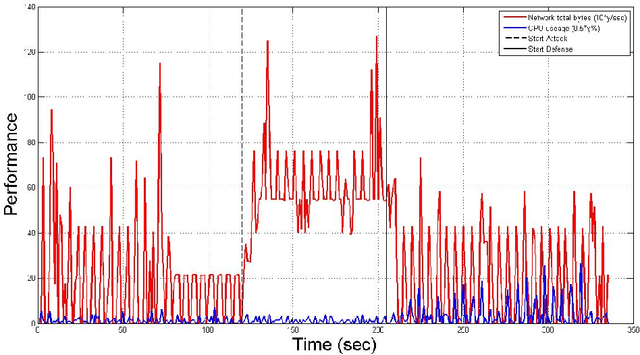
Abstract:To effectively tackle the security threats towards the Internet of things, we propose a SOM-based DDoS defense mechanism using software-defined networking (SDN) in this paper. The main idea of the mechanism is to deploy a SDN-based gateway to protect the device services in the Internet of things. The gateway provides DDoS defense mechanism based on SOM neural network. By means of SOM-based DDoS defense mechanism, the gateway can effectively identify the malicious sensing devices in the IoT, and automatically block those malicious devices after detecting them, so that it can effectively enforce the security and robustness of the system when it is under DDoS attacks. In order to validate the feasibility and effectiveness of the mechanism, we leverage POX controller and Mininet emulator to implement an experimental system, and further implement the aforementioned security enforcement mechanisms with Python. The final experimental results illustrate that the mechanism is truly effective under the different test scenarios.
 Add to Chrome
Add to Chrome Add to Firefox
Add to Firefox Add to Edge
Add to Edge